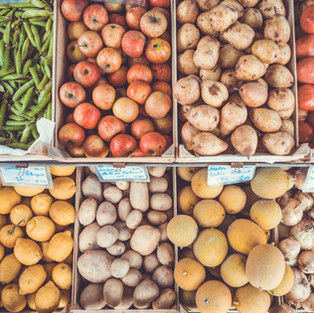Grocery stores are relatively low margin businesses. They key to profitability is to increase the size of the customer’s basket - how much they buy on a visit. If they can sell you a large basket on your visit they make more margin. Basket drives profitability. The push for a bigger basket has driven the way supermarkets are laid out and the products offered.
We have long known that the milk and bread are kept at the back of the store because, as staples, they end up in more baskets. Keeping them at the back ensures that consumers have to go by a lot of other products and, hopefully, buy some of them. Even Shoppers Drug Mart, relatively new to the food retail game, has milk far from the door in the hopes that you pick up something else on your way in or out.
The fragmentation of food demand has created a challenge for grocers. In order to maximize the chances of getting a product into an individual consumer’s basket, they have to have enough versions of the product to satisfy the wide range of preferences. Where there used to be 4 or 5 different kinds of eggs, there are now 15 or 16. I just typed mustard into the search bar of my local grocer’s website (a prominent Canadian brand) and was offered 43 different choices.
There may be a point at which choice actually constrains the basket. Most of us, as individuals, don’t want more choice. It’s just that as individuals, we often make different choices. If we are overwhelmed with choice we may actually simply choose to skip the choice and buy nothing. Stores are working hard to strike the right balance.
You can see specific sections targeted at specific customers in some stores now. This is intended to allow those customers to find their products more easily. My local store has a
“healthy food section” where organics, lower sugar, and other attribute specific products can be found. You can find specific cereals more easily here than in the cereal aisle. International food sections are also common. In these cases, stores are potentially sacrificing flow for customer convenience.
Managing the trade off between choice and search costs will continue to be tricky. A 2017 paper in the journal American Economic Review (Smith et al, 2017, AER, Vol 107: 8) found that increases in specific categories can cost grocers all of a specific customer’s business. That means that if milk, for example, becomes more expensive (or someone else lowers their price dramatically) customers may not only buy less of that category but may switch stores for everything. It could be the same way for search costs. If it becomes too hard to find what you want in your current store, you might switch to a store that fits you better. Specialty stores offer less choice to meet that demand.

Some discount stores save on inventory costs by offering fewer products. Aldi, a German grocer now expanding into the US, has fewer sku’s to allow it to offer lower prices. Some consumers highlight the speed with which they can get through the store because of less choice as a benefit beyond low prices.

There are other tactics too. In some cases, stores are putting complementary products together. I’ve seen yogurt coolers in some cereal aisles next to the granola. Supermarkets are trying to make it easy to buy everything you need. I recently saw tart shells and non-dairy whipped dessert next to blueberries on special. Once again - making it easy to buy more than blueberries.
Balancing choice is an essential element for success for grocers today. Getting it right will differentiate those that succeed versus those that stagnate in the highly competitive market.
Recommended citation format: von Massow, M. “The challenge of choice in food retail”. Food Focus Guelph (31), Department of Food, Agricultural and Resource Economics, University of Guelph, May 30th, 2019.






Comments